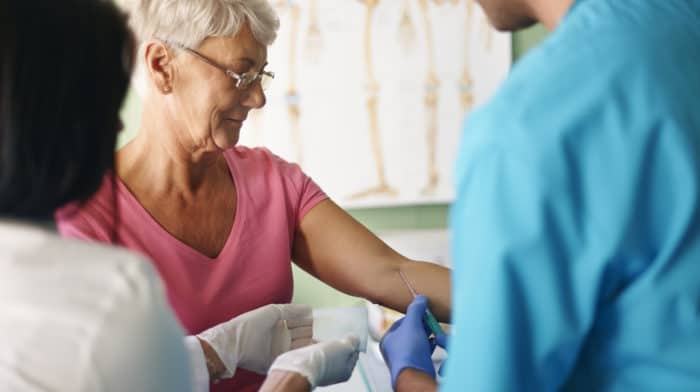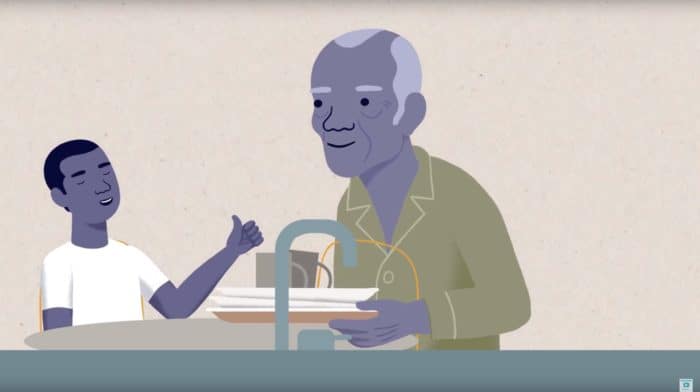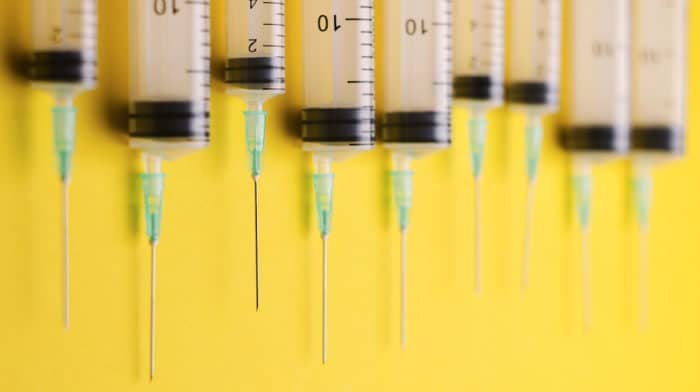How To Give a Needle or Injection
Needles are never fun, but giving a needle might be added to the list of tasks you’ll need to do as a caregiver. Giving someone a needle can be intimidating. Worrying about hurting them, feeling insecure about your skills or feeling unsure of what to do, is common. In this video, we’ll review how to give a specific type of needle that will go into their fatty tissue only. We’ll also give you some tips that’ll help you feel more confident so you can feel good about providing the medication the person you’re caring for needs
Needles are never fun but, giving a needle might be added to the list of tasks you’ll need to do as a caregiver.
Giving someone a needle can be intimidating. Worrying about hurting them, feeling insecure about your skills or feeling unsure of what to do, is common.
A fear of needles isn’t unusual and if you feel that you really can’t do this, be sure to talk to their health care professional and let them know.
In this video, we’ll review how to give a specific type of needle that will go into their fatty tissue only.
These needles are called, “Subcutaneous” and are usually used to give medications like insulin, blood thinners, and pain medication.
We’ll also give you some tips that’ll help you feel more confident so you can feel good about providing the medication the person you’re caring for needs.
Let’s try it!
Start by gathering what we’ll need to give the needle:
A syringe and needle. Sometimes they’re packaged together sometimes you have to assemble them.
The medication that you need to give is usually in a vial or, sometimes, the needle will come pre-filled with the medication. That kind makes the process a lot easier.
You’ll also need a couple of alcohol swabs and some gloves for you to wear.
Finally, you’ll need a special box to throw out the used needles; don’t throw them in the garbage! These special boxes are called “sharps containers” designed to hold used needles. Your garbage collector will thank you!
You can pick up a sharps container for free at your pharmacy and when it’s full or you don’t need it anymore you can take it back to the pharmacy and they’ll dispose of it properly for you. Unless the medication comes in a pre-filled syringe, you’ll have to draw up the medication first.
Start by washing your hands.
If you need to attach the needle to the syringe, they usually screw on like this
Open the vial of medication and clean off the top with an alcohol swab. Scrub it well and let it dry for about 30 seconds.
You have to add pressure to the vial so that you can get the medication out. You can do this by injecting air into the vial. Pull the plunger back until it’s at the same line as the amount of medication you need to give.
Now you can uncap the needle and put it into the vial through the port in the top.
Leave the vial upright for now and make sure the needle isn’t in the fluid. This is so air doesn’t put bubbles in the medication that’ll make it harder to draw up.
Push the plunger down and inject the air into the vial.
Now you can turn the vial over with the needle still in it. Make sure that the needle is in the liquid and carefully pull the plunger back until it’s filled to the level you need.
If you have any air bubbles in there, tap the side of the syringe until they are near the open end and push the plunger a little to get them out.
At this point, you can carefully put the cap back on the needle by picking up the cap with the edge of the needle-like this. Be sure not to touch the needle and never recap a needle after it has been used to inject someone.
Now that you have prepared the needle or if the needle comes pre-filled we’re ready to give it to the person you’re caring for.
For these types of injections the easiest spot to use is their belly. You just need to be 1-2 inches away from their belly button. You can also use the back of their arm or the front of their thigh
Work with the person you’re caring for to choose a spot and make sure you choose a slightly different spot each time, at least 1-2 inches from the last spot you gave it.
To give them the needle, start by washing your hands and putting on gloves, now you can wipe down the area where you’ll be giving the needle with an alcohol swab using a circular motion. Let it dry for about 30 seconds.
Take the cap off of the needle and carefully look at the end. The needle will have a slanted edge called a bevel. Hold the syringe like a pencil with your dominant hand with the bevel edge down so the pointed edge will go in first.
With your other hand, pinch an inch or two of skin and fat.
Using a dart-like motion, the faster the needle goes in, the less it will hurt, insert the needle at a 45-degree angle like this. For small needles, like the kind on an insulin pen, you can go straight in at a 90-degree angle.
Push the plunger down to inject the medication. Try not to do it too quickly that can make it hurt more, it can help to count to ten while you’re putting the medication in.
Remove the needle quickly trying to take it out at the same angle it went in and let go of the skin pinch.
If the area bleeds a little, that’s okay. You can use a cotton ball or tissue to put pressure on the area, but be careful not to rub it, especially if the medication is a blood thinner because that can cause bruising.
Carefully put the needle and syringe into the sharps container. If you used a medication vial that is glass and it’s now empty you can put that in the sharps container too.
Sometimes with certain medications, a nurse will put in something like this. This is called a subcutaneous butterfly. The butterfly can stay in for a few days and makes it so you don’t actually have to poke someone with a needle every time they have a medication.
The nurse will show you how to use it if you need to, but it’s good to know that even though it might look harder to use, it’s actually a lot easier.
The main thing to remember is that each butterfly can only be used for one medication, so if they have more than one medication that’s given like this, make sure to check the label on the butterfly and match the medication you’re giving with the label.
Once the medication is in the syringe, like we drew it up earlier, wash your hands and put on gloves.
Clean the port on the butterfly well with rubbing alcohol and let it dry. Now you can screw on the syringe, you won’t need a needle and slowly inject the medication.
Then you can unscrew the syringe and put it into the sharps container. Giving a needle is one of those tasks that can be stressful and you might have a lot of questions. Make sure to check in with their doctor, nurse or pharmacist and ask them any questions that you have.
Give yourself time to learn and with practice, you’ll be able to give a needle with confidence in no time.
For more caregiver support and resources visit our CareChannel.






